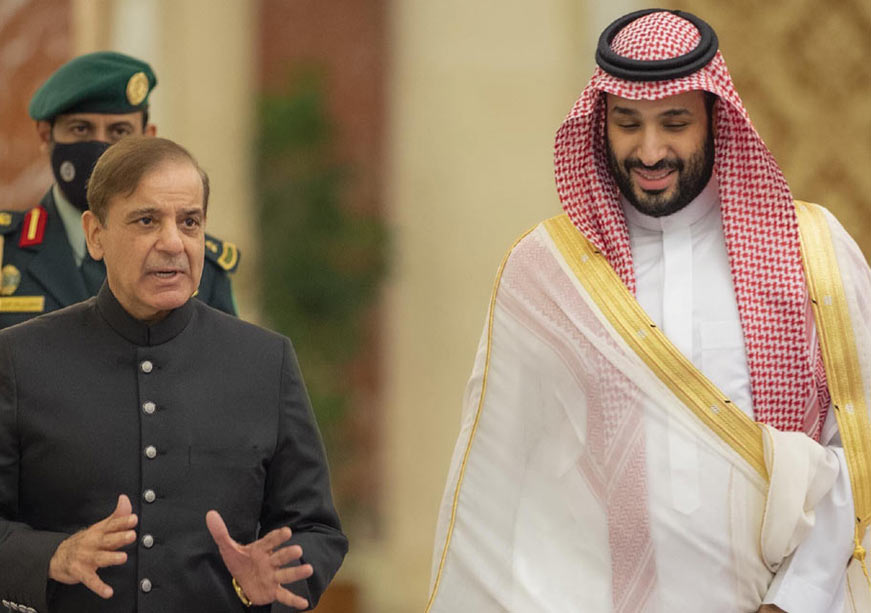Attribution: Kabir Taneja, Ed., “The Saudi Arabia-Pakistan Defence Agreement: Perspectives from India and the Middle East,” ORF Special Report No. 287, Observer Research Foundation, November 2025.
In September 2025, Saudi Arabia and Pakistan signed a Strategic Mutual Defence Agreement (SMDA). The agreement revitalises an old strategic cooperative arrangement between Islamabad and Riyadh and comes amid a churn in the international order that has impacted both the Middle East and South Asia alike. While strategic and fraternal ties between the two states are not new, what requires examination is the recalibration, intent, language, and timing of this renewed understanding between the home of the two Holy Mosques, on one side, and on the other, the Islamic world’s only state with nuclear weapons.
Relations between Saudi Arabia and Pakistan go back seven decades, and Pakistani military personnel being deployed for Saudi security requirements is also an institutionalised process cemented over the years. In essence, the signing of the SMDA itself is not a tectonic geopolitical event. However, a section of the language used in the statement, although vague, calls for a “collective defence” framework, which piqued the interest of analysts, including in India.
The timing of the agreement between the two countries also offers a glimpse into why New Delhi, while downplaying the agreement, has highlighted that it was aware of the negotiations that were taking place, and that its own interests and concerns regarding the same were communicated to Riyadh. However, the actualisation of this deal—a boon for Pakistan in the post-Operation Sindoor landscape—had more to do with the events taking place in the Middle East, not necessarily those between India and Pakistan. Nonetheless, the impact on Indian strategic interests could be severe.
The ongoing geopolitical shifts in the Middle East, such as Israel’s stamp of outright, and often unchallenged, military superiority, and the state’s decision to strike Hamas in Doha, have played a role in escalating the language of the SMDA. While Saudi Arabia has no shortage of funds in its national coffers, it does lack a military that has either a qualitative edge over Israel or the numbers and deep experience on the battlefield. From bolstered Israeli ambitions following the 7 October terror attacks, the war in Gaza, and the possibility of a nuclear Iran remaining largely intact despite a ‘12-day war’ in May this year, Riyadh’s anxieties have offered Pakistan an unexpected economic and strategic lifeline. Today, Pakistan is seen as an extension of the Middle East, a posture it has not particularly been allowed to have for much of the past 20 years, despite being a Muslim state and part of multiple Islamic forums.
This report aims to investigate this agreement between Saudi Arabia and Pakistan from multiple lenses: strategic, geopolitical, economic, bilateral, and regional, to assess the impact it could have in both the near and distant future. The first chapter by Sushant Sareen examines what the SMDA means for Islamabad politically and, in general, for Rawalpindi. This is a critical start to understanding Pakistan’s own dynamics, as the country’s Prime Minister Shahbaz Sharif acclimatises to the reality of not being able to conduct any foreign visit without Army Chief Asim Muir shadowing him.
In the second chapter, Kartik Bommakanti and Rahul Rawat take a deeper look into the impact the Saudi-Pakistan arrangement could have on Indian defence posture. This is particularly relevant after the successes of Operation Sindoor, which has fundamentally remoulded Indian defence thinking at scale for the first time since the Kargil war in 1999.
Moving forward, the Saudi-Pakistan deal will likely have a profound impact on regional and international positions as well. In the Middle East, the ongoing war in Gaza, Israel’s stated aims of disintegrating entities such as Hamas and Hezbollah, Syria’s delicate revival under a former jihadist of the name Ahmed Al Sharaa, Iran’s continuing quiet contestation with Israel following the ‘12-day war’, are all geopolitical realities that have played a part in Riyadh’s requirements from its own bilateral relationship with Pakistan.
Mahdi Ghuloom, in the third chapter, looks at the SMDA from two lenses: the Saudi-Pakistan bilateral, and how the Gulf region views the same. Some argue that Pakistan has, after a long time in the peripheries, moved back into the mainstream of Middle East geopolitics. The impact of this has wider repercussions and not just regional ones.
In the fourth chapter, Samriddhi Vij analyses how India’s ‘geoeconomics first’ outreach to the Gulf, seen as a success story of Prime Minister Narendra Modi’s government since 2015, could be impacted by a ‘return’ of Pakistan in the region’s security calculus. Eszter Karacsony then adds another layer to the discourse and describes how the European Union would try to calibrate its ties with India and Saudi Arabia when the question of Pakistan is thrown into the mix. As an economic bloc with a dwindling geopolitical footprint, the European continent remains a driver of both global trade and politics.
Finally, Atul Kumar writes about the elephant in the room: China. The Pakistan-China bonhomie is well-known, and during Operation Sindoor, Chinese weapons were on Pakistan’s frontlines. Beijing is an economic power and influencer in the Middle East—involved in critical domains like defence, energy security, and high technology—and utilises its power to shape geopolitical realities in a region fraught with upheavals and uncertainties.
The report looks to add colour to the different dimensions of the Saudi Arabia-Pakistan agreement, which can have a direct impact on New Delhi’s relationship with Islamabad. How other powers, capitals, and interlocutors handle these divergences between two nuclear powers in a fragile global order will have far-reaching impacts on international politics and diplomacy.
Read the report here.
This special report originally apperaed in Observer Research Foundation.


















